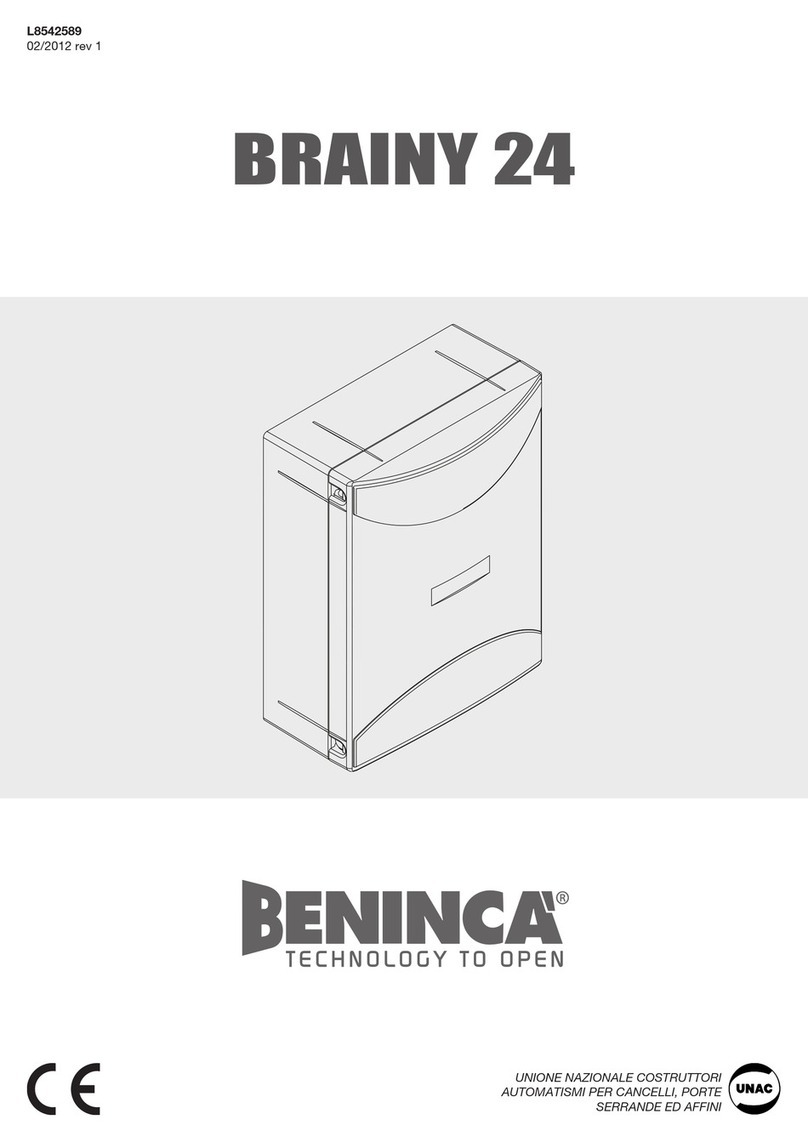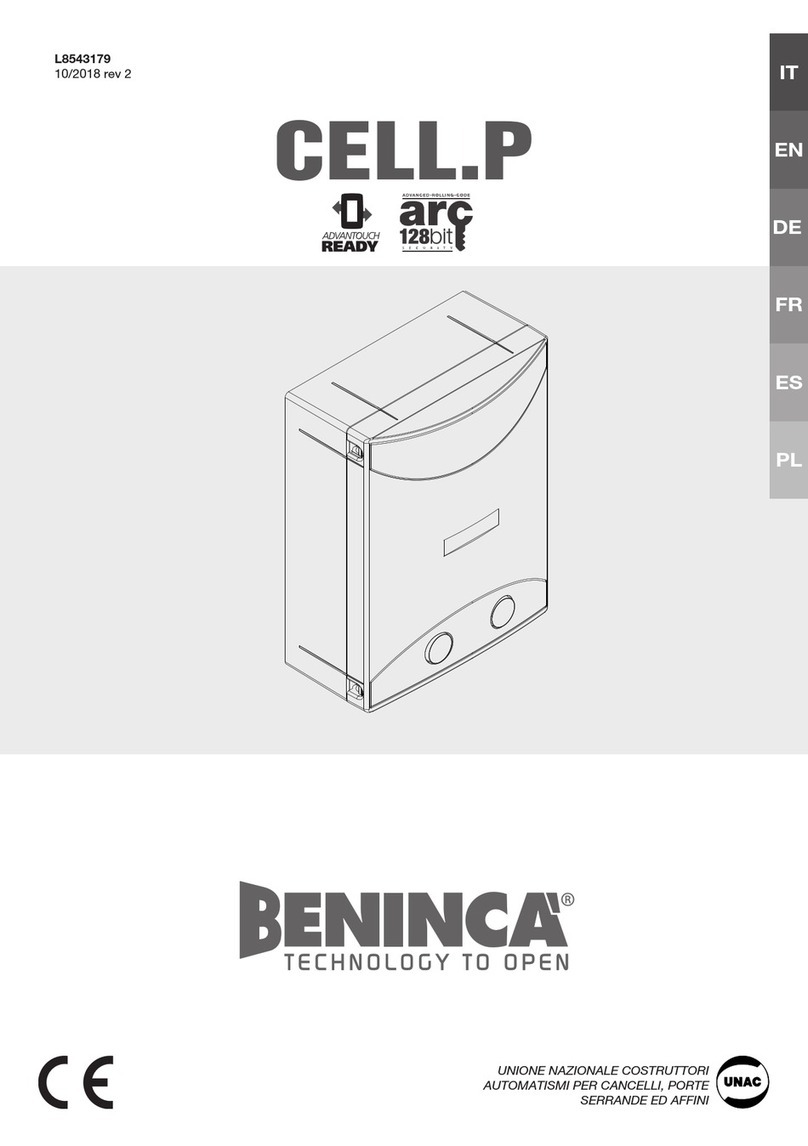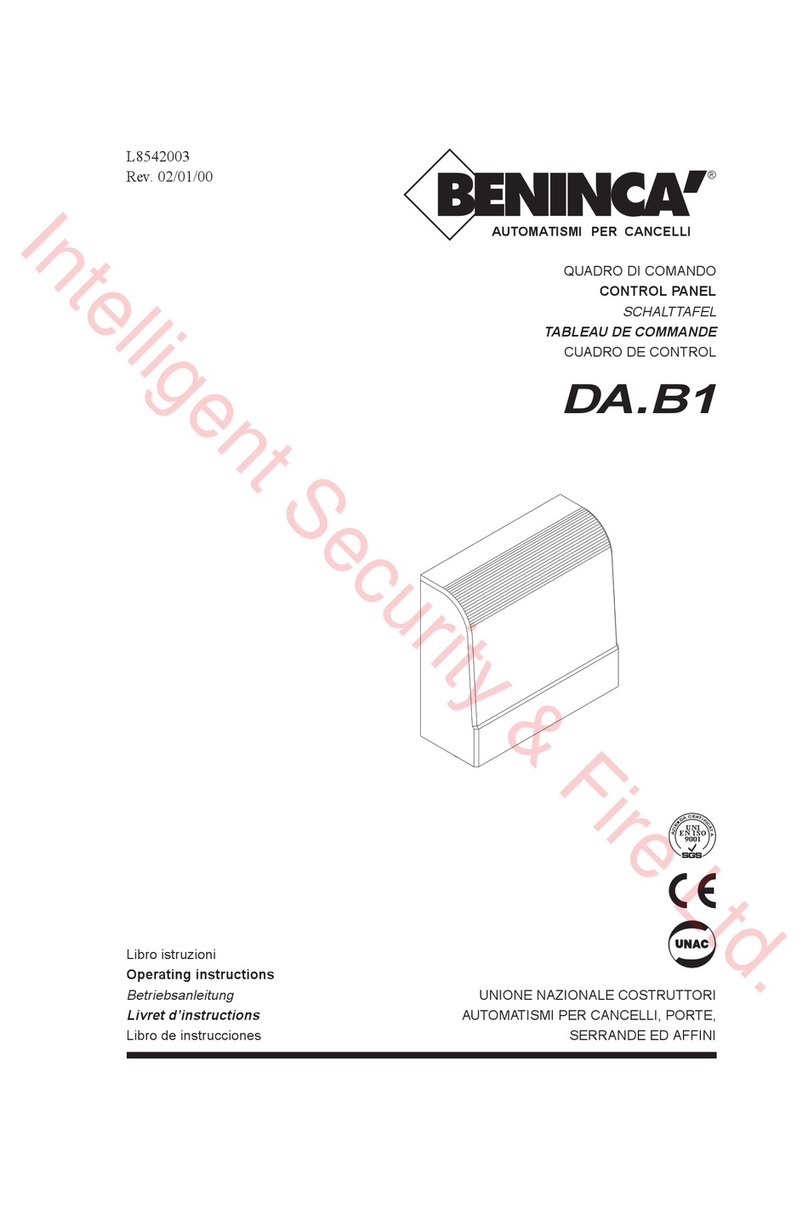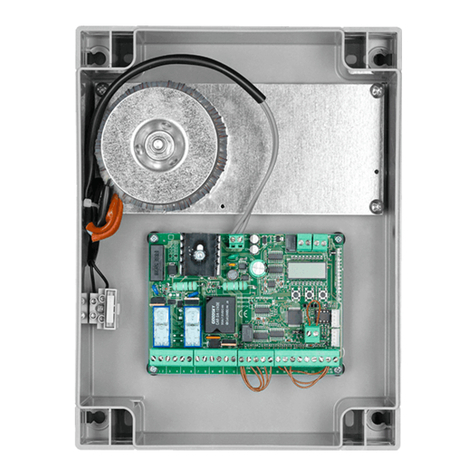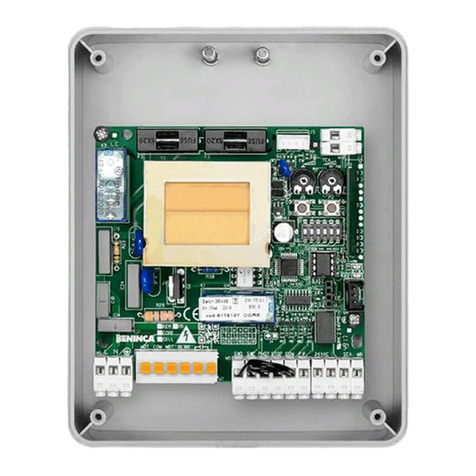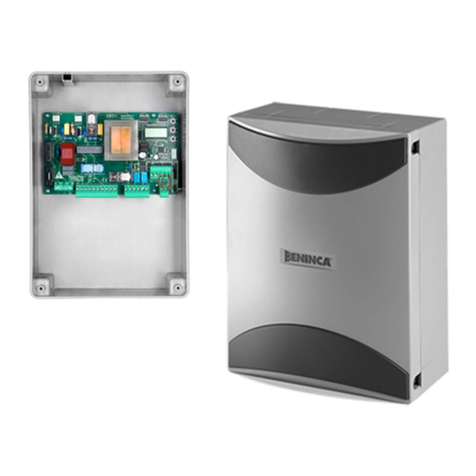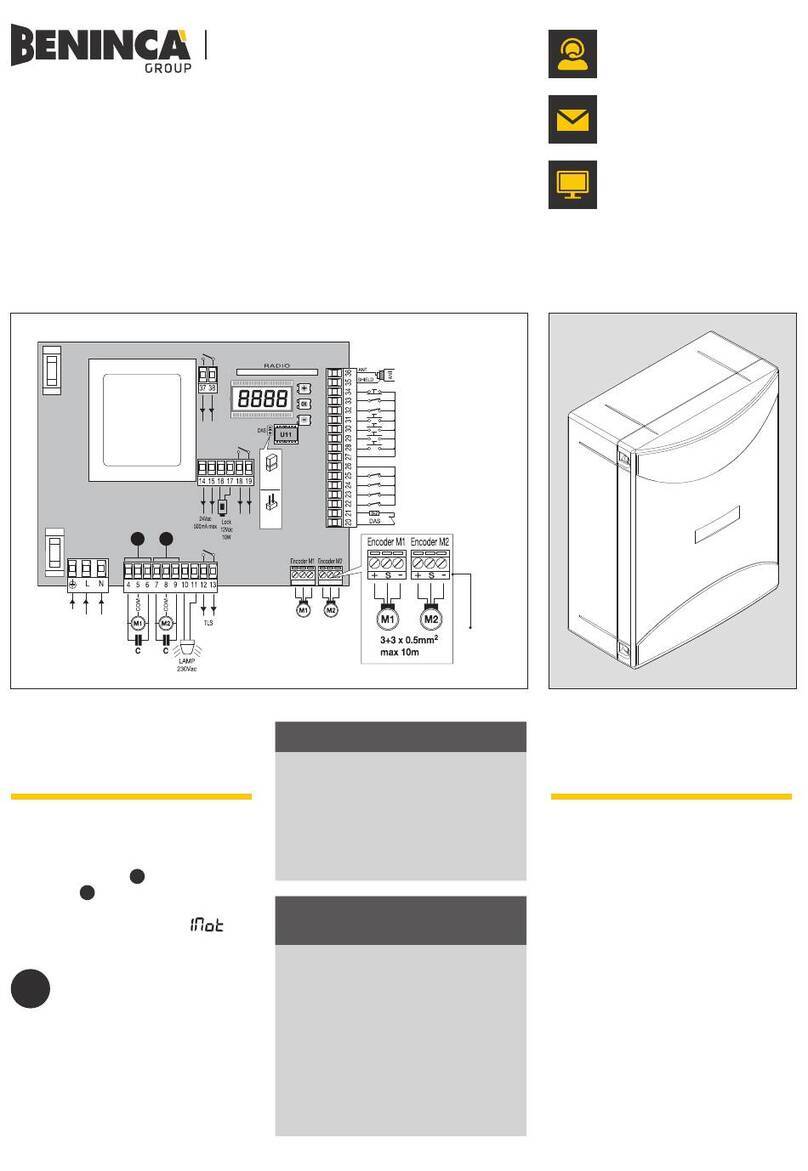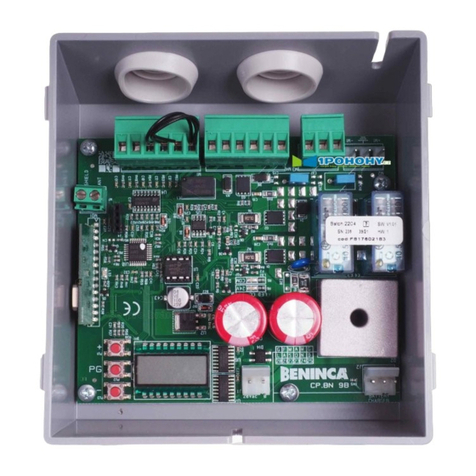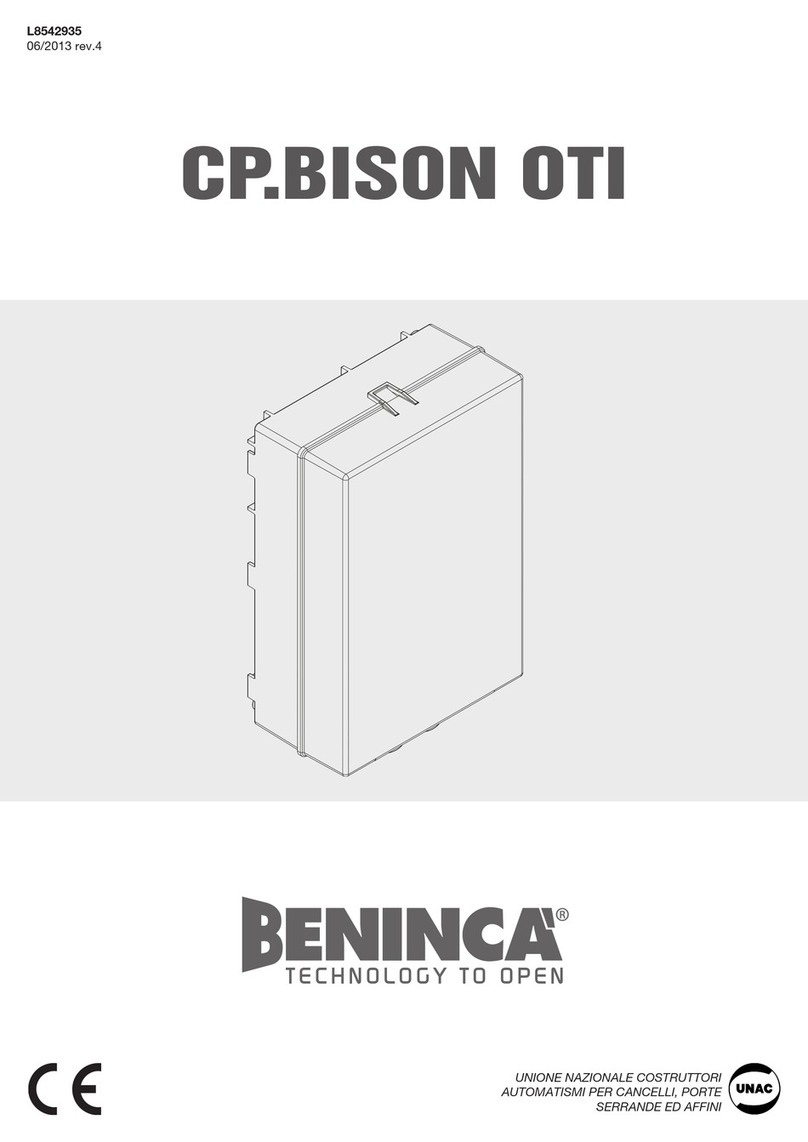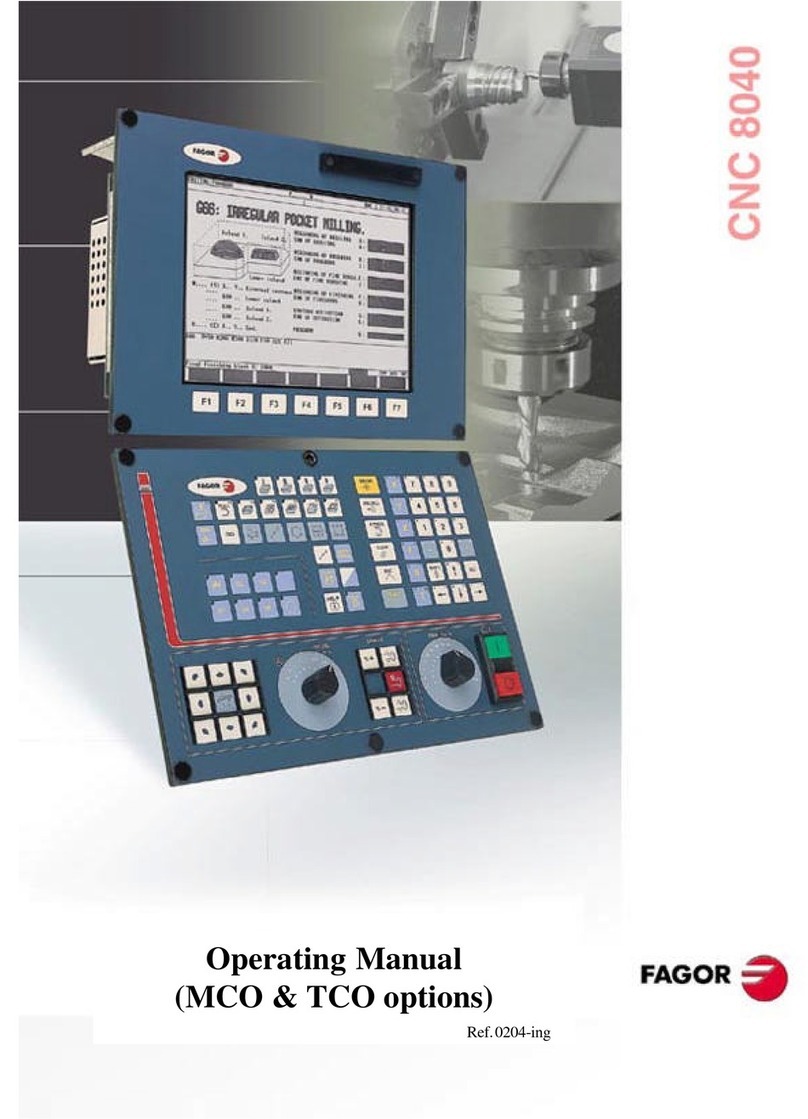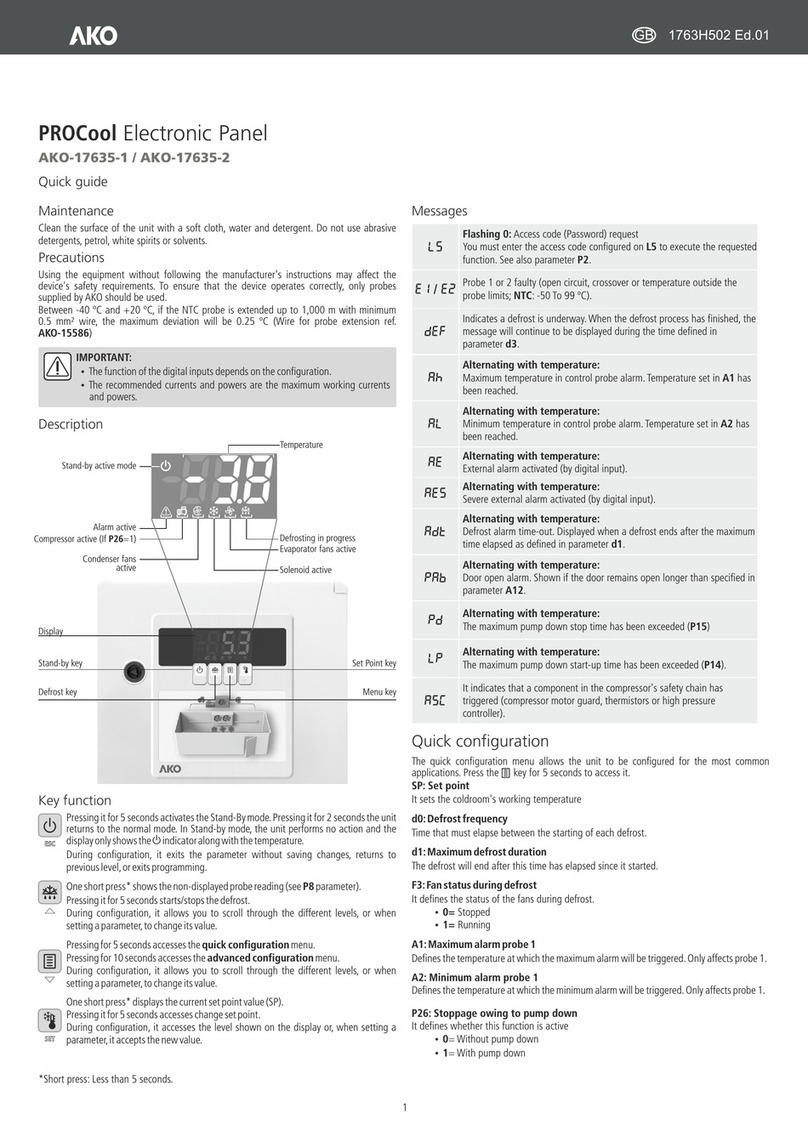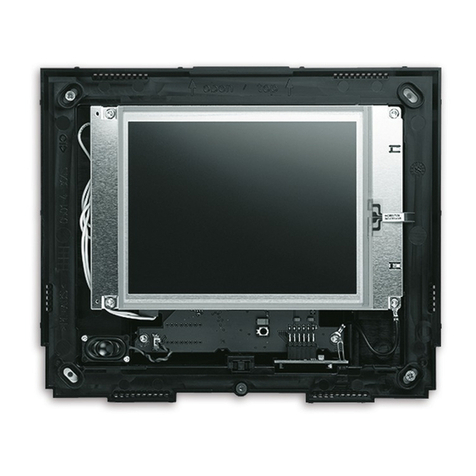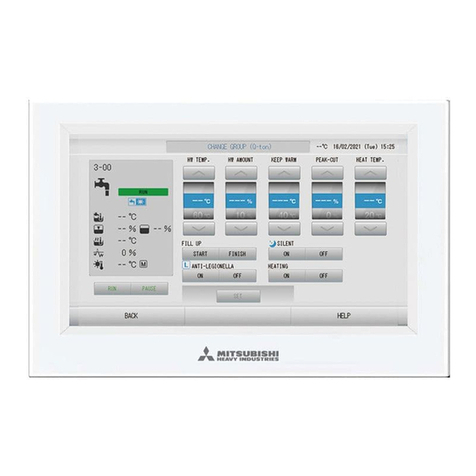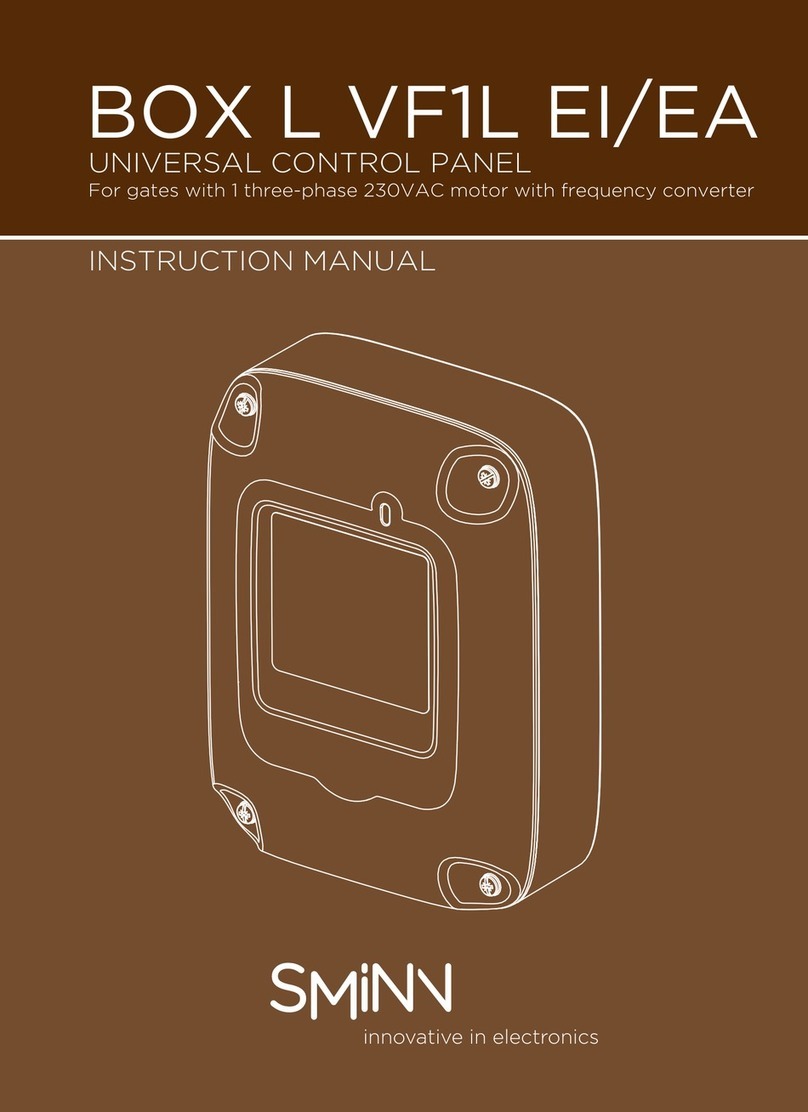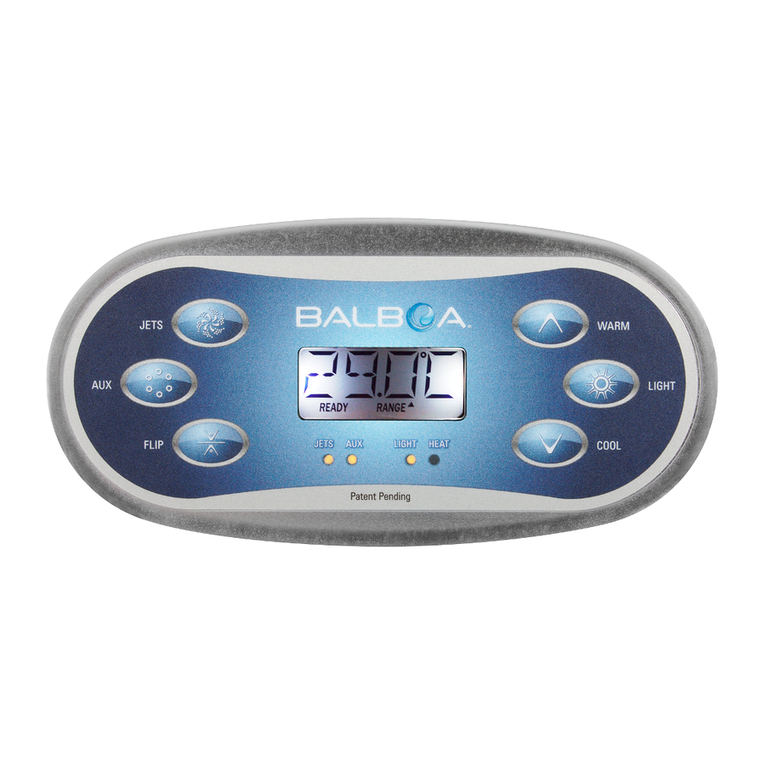
8
RADIO (RADi)
MENU FUNZIONE
PP
Selezionando questa funzione la ricevente si pone in attesa (Push) di un codice trasmettitore da assegnare
alla funzione passo-passo.
Premere il tasto del trasmettitore che si intende assegnare a questa funzione.
Se il codice è valido, viene memorizzato e viene visualizzato il messaggio OK
Se il codice non è valido, viene visualizzato il messaggio Err.
2Ch
Selezionando questa funzione la ricevente si pone in attesa (Push) di un codice trasmettitore da assegnare al
secondo canale radio.
Premere il tasto del trasmettitore che si intende assegnare a questa funzione.
Se il codice è valido, viene memorizzato e viene visualizzato il messaggio OK
Se il codice non è valido, viene visualizzato il messaggio Err.
Se la logica 2CH è impostata su OFF il tasto assegnato alla funzione 2CH esegue il comando pedonale.
CLR
Selezionando questa funzione la ricevente si pone in attesa (Push) di un codice trasmettitore da cancellare
dalla memoria.
Se il codice è valido, viene cancellato e viene visualizzato il messaggio OK
Se il codice non è valido o non è presente in memoria, viene visualizzato il messaggio Err
RTR Cancella completamente la memoria della ricevente. Viene richiesta conferma dell’operazione.
CENTRALE DI COMANDO COMPATIBILE ARC
IMPORTANTE, LEGGERE CON ATTENZIONE:
Il ricevitore radio presente in questo prodotto è compatibile con i nuovi trasmettitori ARC (Advanced Rolling Code) i quali, grazie alla
codifica a 128 bit, garantiscono una superiore sicurezza anticopiatura.
La memorizzazione dei nuovi trasmettitori ARC è del tutto analoga a quella dei normali trasmettitori Rolling Code con codifica HCS,
ma occorre tenere presente che:
1) Trasmettitori ARC e Rolling Code HCS non possono essere memorizzati in una singola ricevente.
2) Il primo trasmettitore memorizzato stabilisce la tipologia di trasmettitori da utilizzare in seguito. Se il primo trasmettitore memo-
rizzato è ARC, non sarà possibile memorizzare trasmettitori Rolling Code HCS, e viceversa.
3) I trasmettitori a codice fisso possono essere utilizzati solo in abbinamento ai trasmettitori Rolling Code HCS, portando la logica
CVAR in OFF. Non sono quindi utilizzabili in abbinamento ai trasmettitori ARC. Se il primo trasmettitore Rolling Code memorizzato
è un ARC la logica CVAR è inifluente.
4) Se si desidera cambiare tipologia di trasmettitori è necessario procedere con un reset della ricevente.
APPRENDIMENTO REMOTO TRASMETTITORI
Se si dispone di un trasmettitore già memorizzato nella ricevente è possibile effettuare l’apprendimento radio remoto (senza neces-
sità di accedere alla centrale).
IMPORTANTE: La procedura deve essere eseguita con ante in apertura durante la pausa TCA.
Procedere come segue:
1 Premere il tasto nascosto del trasmettitore già memorizzato.
2 Premere, entro 5s, il tasto del trasmettitore già memorizzato corrispondente al canale da associare al nuovo trasmettitore. Il lam-
peggiante si accende.
3 Premere entro 10s il tasto nascosto del nuovo trasmettitore.
4 Premere, entro 5s, il tasto del nuovo trasmettitore da associare al canale scelto al punto 2. Il lampeggiante si spegne.
5 La ricevente memorizza il nuovo trasmettitore ed esce immediatamente dalla programmazione.
MENU FUNZIONE
NMAN
Visualizza il numero di cicli completi (apre+chiude) effettuate dall’automazione.
La prima pressione del pulsante <PG>, visualizza le prime 4 cifre, la seconda pressione le ultime 4.
Es. <PG> 0012 >>> <PG> 3456: effettuati 123.456 cicli.
RES
RESET della centrale. ATTENZIONE!: Riporta la centrale ai valori di default.
La prima pressione del pulsante <PG> provoca il lampeggio della scritta RES, una ulteriore pressione del pul-
sante <PG> effettua il reset della centrale.
Nota: Non vengono cancellati i trasmettitori dalla ricevente, ne la posizione e la corsa dell’anta.
SET
Autotaratura della centrale.
ATTENZIONE!: durante questa operazione il movimento delle ante DEVE essere libero da impedimenti.
La prima pressione del pulsante <PG> provoca il lampeggio della scritta SET ad intervalli di 1s, una ulteriore
pressione del pulsante <PG> effettua la sequenza di autoset della centrale.
Se la sequenza di autotaratura ha avuto esito positivo sul display compare la scritta “OK”, altrimenti vieni vi-
sualizzata la scritta “Err” (si rende necessario ripetere l’autoset).
Se durante l’autotaratura viene attivato un ingresso qualsiasi (PP,PED,PHOT,STOP), la procedura si blocca
immediatamente e sul display compare la scritta “Err”.
Nota: L’autotaratura imposta i valori di coppia dei motori. Al termine dell’operazione verificare la correttezza dei
valori impostati ed eventualmente modificarli manualmente utilizzando l’apposito menu.

